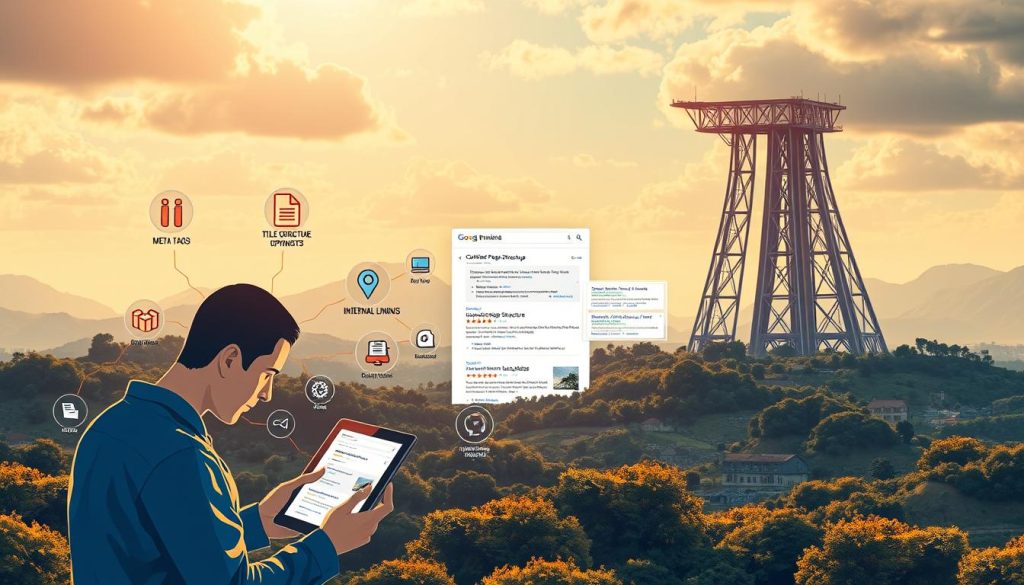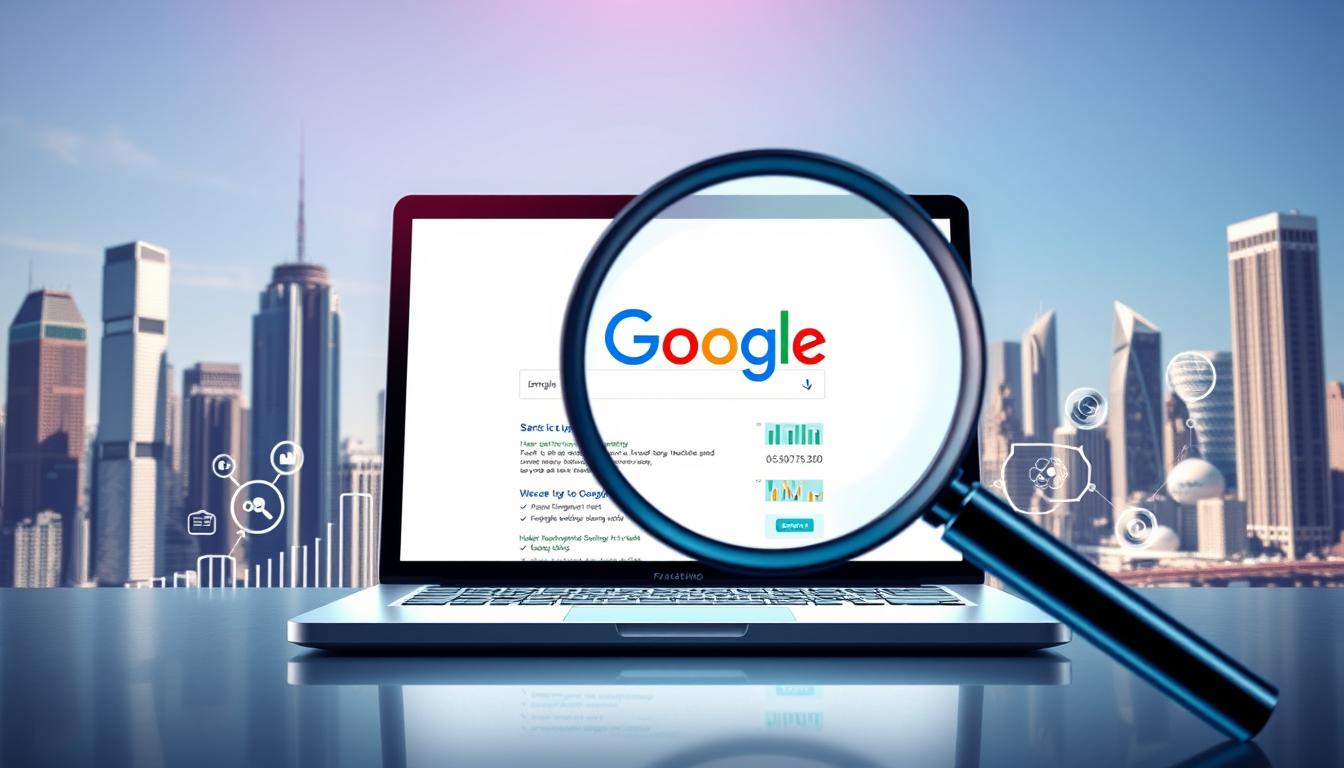Are you tired of waiting for your website to climb the Google ranks? Can you really improve your website’s visibility overnight? The answer lies in understanding the right SEO tactics to boost your online presence.
Improving your website’s ranking on Google is crucial for driving traffic and generating leads. With the ever-changing Google algorithms, it’s challenging to stay ahead of the competition. However, by implementing effective SEO strategies, you can significantly enhance your website’s visibility and drive more traffic to your site.
In this article, we’ll explore the most effective SEO tactics to help you boost your Google rankings quickly and stay ahead of the competition.
Key Takeaways
Table of Contents
- Effective SEO strategies to improve website ranking
- Tips to boost Google rankings quickly
- Understanding Google algorithms for better SEO
- Driving traffic and generating leads through SEO
- Staying ahead of the competition with the right SEO tactics
Understanding Google’s Ranking Factors
Understanding the intricacies of Google’s ranking factors is crucial for any SEO strategy. Google’s algorithm is designed to provide users with the most relevant and high-quality content, and understanding its components can significantly improve your website’s visibility.
Key Ranking Signals in 2023
In 2023, key ranking signals include high-quality content, user experience, and mobile-friendliness. As stated by Google’s guidelines, “pages should be optimized for mobile devices to improve user experience.”
“The mobile-first indexing means that Google predominantly uses the mobile version of the content for indexing and ranking.”
How Google’s Algorithm Evaluates Websites
Google’s algorithm evaluates websites based on multiple factors, including content relevance, page speed, and backlink quality. Ensuring your website excels in these areas can enhance its ranking.
The Balance Between Quick Wins and Long-Term Strategy
A successful SEO strategy balances quick wins, such as optimizing meta tags, with long-term efforts like creating comprehensive, high-quality content. This dual approach helps maintain and improve rankings over time.
How to Rank on Google Fast
To rank on Google quickly, it’s essential to implement effective SEO techniques that drive immediate impact. This involves understanding the right strategies to boost your website’s visibility and relevance.
Quick-Win SEO Tactics for Immediate Impact
Implementing quick-win SEO tactics can significantly improve your Google rankings. These include optimizing your website’s loading speed, ensuring mobile-friendliness, and using targeted keywords in your content. By focusing on these areas, you can achieve immediate improvements in your search engine rankings.

Setting Realistic Timeframes for Results
While implementing SEO strategies, it’s crucial to set realistic expectations for when you’ll see results. Google’s algorithm is complex, and ranking improvements don’t happen overnight. Typically, noticeable improvements can be seen within a few weeks to a few months, depending on the competitiveness of your niche and the effectiveness of your SEO efforts.
Prioritizing High-Impact Optimization Efforts
To maximize your SEO efforts, prioritize high-impact optimization tasks. This includes technical SEO improvements like fixing crawlability issues, optimizing meta tags, and creating high-quality, relevant content. By focusing on these high-impact areas, you can drive significant improvements in your Google rankings.
By combining these strategies and maintaining a consistent SEO effort, you can achieve faster and more sustainable Google ranking improvements.
Technical SEO Essentials for Rapid Improvement
Rapid improvement in Google rankings requires a solid understanding of technical SEO essentials. Technical SEO involves optimizing your website’s underlying structure and elements to make it more crawlable, indexable, and visible to search engines.
Site Speed Optimization Techniques
One of the critical technical SEO aspects is site speed optimization. A faster website improves user experience and is favored by Google’s algorithm.
Image Compression and Browser Caching
Techniques like image compression and browser caching can significantly reduce your website’s load time. Image compression reduces the file size of images, while browser caching stores frequently-used resources locally in the user’s browser.
Minimizing Code and Redirects
Minimizing code and reducing unnecessary redirects also contribute to a faster website. Clean, efficient code ensures that your site loads quickly, and fewer redirects mean less time wasted on redirecting users.
Mobile-Friendly Design Implementation
Implementing a mobile-friendly design is no longer optional; it’s a necessity. Google prioritizes mobile-friendly websites in its search results, so ensuring your site is responsive and works well on all devices is crucial.
Fixing Crawlability Issues and Indexation Problems
Ensuring your website is crawlable and indexable by search engines is vital. Fixing crawlability issues involves resolving problems like broken links, duplicate content, and improper redirects, while indexation requires submitting a sitemap and using robots.txt effectively.
| Technical SEO Aspect | Importance | Action Required |
|---|---|---|
| Site Speed | High | Optimize images, enable browser caching |
| Mobile-Friendliness | Critical | Implement responsive design |
| Crawlability | High | Fix broken links, optimize robots.txt |
On-Page SEO Tactics That Drive Quick Results
On-page SEO is a critical component of any successful SEO campaign, driving quick results and increasing organic traffic. By optimizing individual web pages, you can significantly enhance your website’s visibility on search engines.
Strategic Keyword Placement
Strategic keyword placement is fundamental to on-page SEO. It involves using relevant keywords in your content, particularly in areas that have a significant impact on search engine rankings, such as the title tag, meta description, and headings. Effective keyword placement helps search engines understand the content and relevance of your page.

Title Tag and Meta Description Optimization
Optimizing your title tags and meta descriptions is crucial for improving click-through rates and search engine rankings. Your title tag should be descriptive and include the primary keyword, while your meta description should provide a compelling summary of the page’s content. A well-crafted meta description can significantly increase the likelihood of users clicking on your page.
Content Structure and Formatting Best Practices
A well-structured and formatted content not only enhances user experience but also improves search engine crawlability. This includes using header tags (H1, H2, H3, etc.) to organize content, breaking up long paragraphs, and using bullet points or numbered lists when appropriate.
Header Tag Optimization
Header tags play a crucial role in content structure. They help search engines understand the hierarchy of your content and highlight key points. Using header tags effectively can improve the readability and SEO of your content.
Internal Linking Strategies
Internal linking is an often-overlooked aspect of on-page SEO. By linking to other relevant pages on your website, you can improve user experience, increase engagement, and help search engines understand your site’s structure. Effective internal linking can also help distribute link equity throughout your site.
| On-Page SEO Element | Description | Best Practice |
|---|---|---|
| Title Tag | Defines the title of the page | Include primary keyword, keep under 60 characters |
| Meta Description | Provides a summary of the page | Compelling and descriptive, include primary keyword, keep under 160 characters |
| Header Tags | Organizes content hierarchy | Use H1 for main title, H2-H6 for subheadings, include keywords where relevant |
Content Strategies to Boost Rankings Fast
Rapidly improving your Google rankings involves leveraging the right content strategies. To improve search engine ranking, it’s essential to focus on creating high-quality, engaging content that resonates with your audience.
Creating High-Quality, Relevant Content
High-quality content is the cornerstone of effective google ranking strategies. This involves producing well-researched, informative, and engaging content that addresses the needs and interests of your target audience. Here are some key elements to consider:
- Conduct thorough keyword research to identify relevant terms and phrases.
- Create content that is both informative and engaging, using a mix of formats such as text, images, and videos.
- Ensure your content is well-structured and easy to read, using headings, subheadings, and bullet points.
Content Updating and Refreshing Techniques
Updating and refreshing existing content is a crucial aspect of maintaining and improving your search engine rankings. This can involve:
- Reviewing and updating outdated information to keep your content relevant.
- Expanding on existing topics to provide more comprehensive coverage.
- Reoptimizing content with new keywords or phrases that have been identified since the original content was created.
Leveraging Trending Topics for Visibility
Creating content around trending topics can significantly boost your visibility in search engine results. This involves:
- Identifying trending topics in your niche using tools like Google Trends.
- Creating timely and relevant content that capitalizes on these trends.
- Promoting your content through social media and other channels to maximize its reach.
Local Content Optimization for Regional Businesses
For regional businesses, optimizing content for local search is vital. This includes:
- Using location-specific keywords to target local search queries.
- Creating content that is relevant to your local audience, such as local news, events, or guides.
- Ensuring your business is listed in local directories and on Google My Business.
By implementing these content strategies, you can significantly enhance your Google rankings and drive more traffic to your website. Remember, the key is to be consistent, patient, and always focused on providing value to your audience.
Link Building Tactics for Faster Google Rankings
Link building strategies play a significant role in enhancing your website’s visibility on Google. By acquiring high-quality backlinks, you can significantly improve your website’s credibility and ranking on search engine results pages (SERPs).

Quick-Win Backlink Opportunities
Identifying quick-win backlink opportunities is crucial for immediate impact. This can include listing your website in relevant directories, leveraging existing partnerships, or creating linkable assets that attract links naturally.
- List your website in niche-specific directories.
- Utilize existing business partnerships for backlinks.
- Create high-quality, linkable content.
Guest Posting and Outreach Strategies
Guest posting is a powerful way to build backlinks while also establishing your authority in your niche. Effective outreach strategies involve identifying relevant sites, crafting compelling pitches, and creating valuable content for their audiences.
Key elements of successful guest posting include:
- Researching and targeting relevant websites.
- Personalizing your outreach efforts.
- Providing high-quality, engaging content.
Social Signals and Their Impact on Rankings
While the direct impact of social signals on Google rankings is debated, there’s no denying that a strong social presence can drive traffic and increase the visibility of your content, potentially leading to more backlinks.
| Social Signal | Impact on SEO |
|---|---|
| Likes and Shares | Increased content visibility |
| Comments and Engagement | Potential for more backlinks |
Competitor Backlink Analysis and Acquisition
Analyzing your competitors’ backlink profiles can reveal opportunities for your own link building efforts. By identifying gaps and leveraging similar sources, you can acquire high-quality backlinks that boost your website’s visibility.
By implementing these link building tactics, you can enhance your website’s SEO strategies and improve your Google rankings over time.
Conclusion: Maintaining Your Improved Rankings
To sustain your improved website ranking, ongoing SEO efforts are crucial. By implementing the strategies outlined in this article, you’ve taken the first step towards boosting your Google rankings.
Regularly updating your content, refining your technical SEO, and building high-quality backlinks will help maintain your position. Focus on creating a user-friendly experience, as this is a key factor in Google’s ranking algorithm.
By continuing to improve website ranking through targeted SEO tactics, you’ll be better positioned to adapt to algorithm changes and stay ahead of the competition. Stay committed to your SEO strategy to achieve long-term success.

